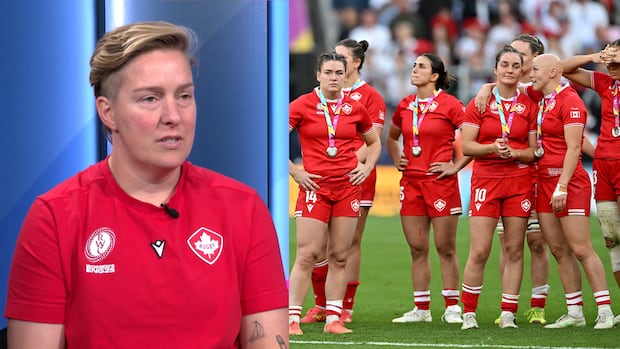Canada’s summer and winter Olympians, along with other athletes, were left on the outside during Tuesday’s budget announcement by the federal government, despite a push in recent months by the Canadian Olympic Committee and national sport organizations for more resources.
In Prime Minister Mark Carney’s first budget delivered by Finance Minister François-Philippe Champagne, no new funding is allocated toward sports in the announcement, with 2005 representing the most recent increase in core federal funding for Canada’s 62 federally funded NSOs.
Core funding is money the sport organizations rely on to fund operations, athletes, coaches and support staff.
The ask this year was a $144 million increase to offset two decades without a significant boost that appear as millions of dollars of deficits on the books of NSOs, according to COC CEO David Shoemaker.
He was hopeful Carney, a former collegiate hockey goalie who has previously stated his love and passion for sport, physical activity and recreation in Canada, would take a stand and through the budget tell Canadians that athletes matter.
“He understands the power of sport. The reality is we are falling way behind our competitors. Germany, Italy, France are outspending us by 10 times,” Shoemaker revealed to CBC Sports recently.
In the April 2024 budget, the government proposed two-year investments totalling $41 million toward the Sport Support Program (which goes toward NSOs and five other groups who support the development of Canadian sport), the Future of Sport in Canada Commission (a body whose two main focuses are funding and safe sport) and community sport programming.
The proposal was less than half the $104 million increase requested by the COC.
CBC’s Power & Politics host David Cochrane sat down with Canadian Olympic Committee Chief Executive Officer and Secretary General David Shoemaker and Olympic and world champion sprinter Andre De Grasse, to discuss the COC’s call to increase funding to Canada’s sport system.
Canada’s nine gold medals and 27 in all last year in Paris were records for a non-boycotted Summer Olympics. Despite the success, Shoemaker was concerned about athletes reaching their full potential without further funding.
“I worry about performance in Milano Cortina [in 2026] and certainly for [Los Angeles in 2028],” he said at the time in reference to the next Winter and Summer Olympics.
Funding is the most important issue for Canadian Olympians, according to COC Athletes’ Commission chair Philippe Marquis.
“Sport organizations are at the brink of falling apart with the lack of funding and the resources,” the two-time Olympian in freestyle skiing told CBC Sports earlier this year. “Everyone is tight [financially].”
Many NSOs struggle to operate, let alone efficiently. Some were told this year their funding would be slashed by the federal government, so they made cuts and slashed expenses where possible.
Diminished support for the next generation is a common theme, whether it means fewer paid travel meals or decreased access to a team doctor on the road.
2004 Olympic champion Adam van Koeverden outlines his vision for reshaping Canada’s sports system—from grassroots participation to high-performance excellence.
The 2024 federal budget increased the monthly living and training allowances by about 23 per cent under the Athletes Assistance Program to about $2,170. The program, commonly known as carding, draws from a pool of $40 million to support over 1,900 eligible athletes.
“Was it sufficient? Not necessarily, and it has to be indexed with inflation and obviously what’s going on around the world with cost of living,” Marquis said.
If each athlete received an equal share of the $40 million, it would equate to around $21,000 annually. However, that amount wouldn’t cover the $25,000 team fee for Bobsleigh Canada Skeleton athletes.
Adam van Koeverden, an Olympic kayak champion who serves as secretary of state for sport in Carney’s cabinet, said five months ago it was “critical” core funding be increased for national sport organizations. He also agreed carding funding be indexed with inflation, even though budgeting for that could be “a bit ambiguous.”
“As a sport system, we’ve been advocating for more money for swimming or more money for canoe kayak or more money for rugby or more money for rowing. And what we need to see is just a larger investment in sport from all sectors and every level of government,” he said.
Canadian rugby players Tyson Beukeboom and Taylor Perry were treated like rock stars at the Women’s Rugby World Cup in England, where they captured a silver medal. But without full-time contracts or a domestic league back home, they are both unemployed and looking for work.
Rugby Canada announced last week its fundraising campaign leading up to the Women’s Rugby World Cup exceeded its goal, bringing in just over $1 million. The money, added to $2.6 million from the governing body, made up the shortfall in Canada head coach Kevin Rouet’s preparation plan.
The money helped pay for two additional pre-tournament camps, the first in Chula Vista, Calif., in May ahead of the Pacific Four Series, and the second in Perth, Ont., in July before a pair of test matches in South Africa.
Still, Rugby Canada CEO Nathan Bombrys expected Canada to have one of the lowest budgets in the entire tournament.
“I’d like to see [the Canadian federal government] really appreciate the value that sport brings to the nation, to Canada, and really understand that,” he said.
On a positive note, it was announced last week Canada’s Olympic and Paralympic athletes and coaches will receive $3.11 million in funding for mental health services this winter.
The government also announced two months earlier a $4.5 million boost in funding to support community initiatives, which went toward the Canadian Paralympic Committee, Athletics Canada and other organizations.









